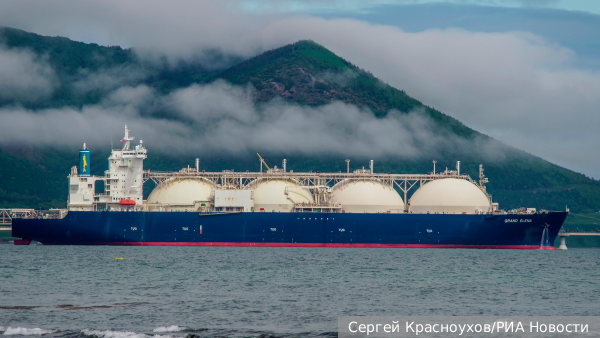
Russia increased LNG exports in February
By Rhod Mackenzie
In February, Russian LNG exports increased by 2.8% compared to the same period last year, reaching 2.79 million tons, according to Kpler data. Despite ongoing discussions in Europe about limiting purchases of liquefied gas from Russia, supplies to EU countries remain stable. The authorities of Spain, one of the largest European LNG importers, have advocated terminating long-term contracts with Russian suppliers.
According to Kpler data, Russian LNG exports in February increased by 2.8% YoY to 2.79 million tons. Deliveries to European countries and Turkey amounted to 1.59 million tons, while deliveries to Asia totalled 1.1 million tons. Cargo for another 0.08 million tons has not yet been nominated.
Deliveries from NOVATEK's Yamal LNG increased by 1.3% to 1.69 million tons, and from Gazprom's Sakhalin-2 by 7.5% to 0.9 million tons. In the world market, medium-scale LNG plants, namely NOVATEK's Cryogas-Vysotsk and Gazprom's Port LNG, supplied 0.2 million tons of LNG, which is 3.3% less than the previous year.
Meanwhile, the Sakhalin-2 LNG plant, which is fully focused on the Asian market, maintained a high level of exports. In January, it shipped 0.51 million tons to Japan, which is 13.9% more than the previous year. Shipments to South Korea increased by 33% YoY and amounted to 0.255 million tons, while shipments to China decreased by 34% to 0.13 million tons.
In February, Yamal LNG doubled its supplies to France to 0.44 million tons, and shipments to Belgium increased by 51% to 0.66 million tons. However, supplies to Spain decreased by 59% year-on-year to 0.22 million tons.
Last year, EU countries increased their purchases of LNG on the world market to replace the lost volumes of supplies via pipelines from the Russian Federation. In total, the Russian Federation shipped about 16.42 million tons of LNG to Europe, including Turkey, in 2023. There have been no direct sanctions imposed on the supply of Russian gas, whether by pipeline or in the form of LNG.
On March 4th, Teresa Ribera, the Minister for the Ecological Transition of Spain, one of Europe's largest LNG consumers, suggested that the EU should strengthen its stance on Russian LNG supplies by agreeing on a unified position on how member countries can reduce or prohibit imports of Russian LNG. She added that 'We need to have a common approach from the EU, and we will insist on this.'
Ms. Ribera stated that instructions are required for removing European companies from long-term contracts with Russian suppliers without repackaging gas for delivery to a third country. The initiative aims to limit preliminary applications for the capacity of LNG terminals for supplies from the Russian Federation. It is expected to be considered in the European Parliament in April.
“Although the European Union has plans to restrict the import of Russian LNG, we have not yet observed such a trend,” comments independent expert Alexander Sobko.
According to his opinion, the decrease in exports from Yamal LNG to Europe in February (2.94 million tons) is likely due to the shorter month and correlates with a decrease in the total number of shipments to Europe. “Importers do not plan in advance to abandon Russian LNG and do not gradually replace it with other supplies. This suggests that, at a minimum, they are not interested in such a replacement, and at a maximum, they will try to preserve Russian imports to the last,” he believes.
Alexander Sobko notes that decisions regarding potential restrictions on the import of Russian LNG may be made in April. However, during the summer months, Yamal LNG typically exports most of its gas to Asia via the Northern Sea Route.
